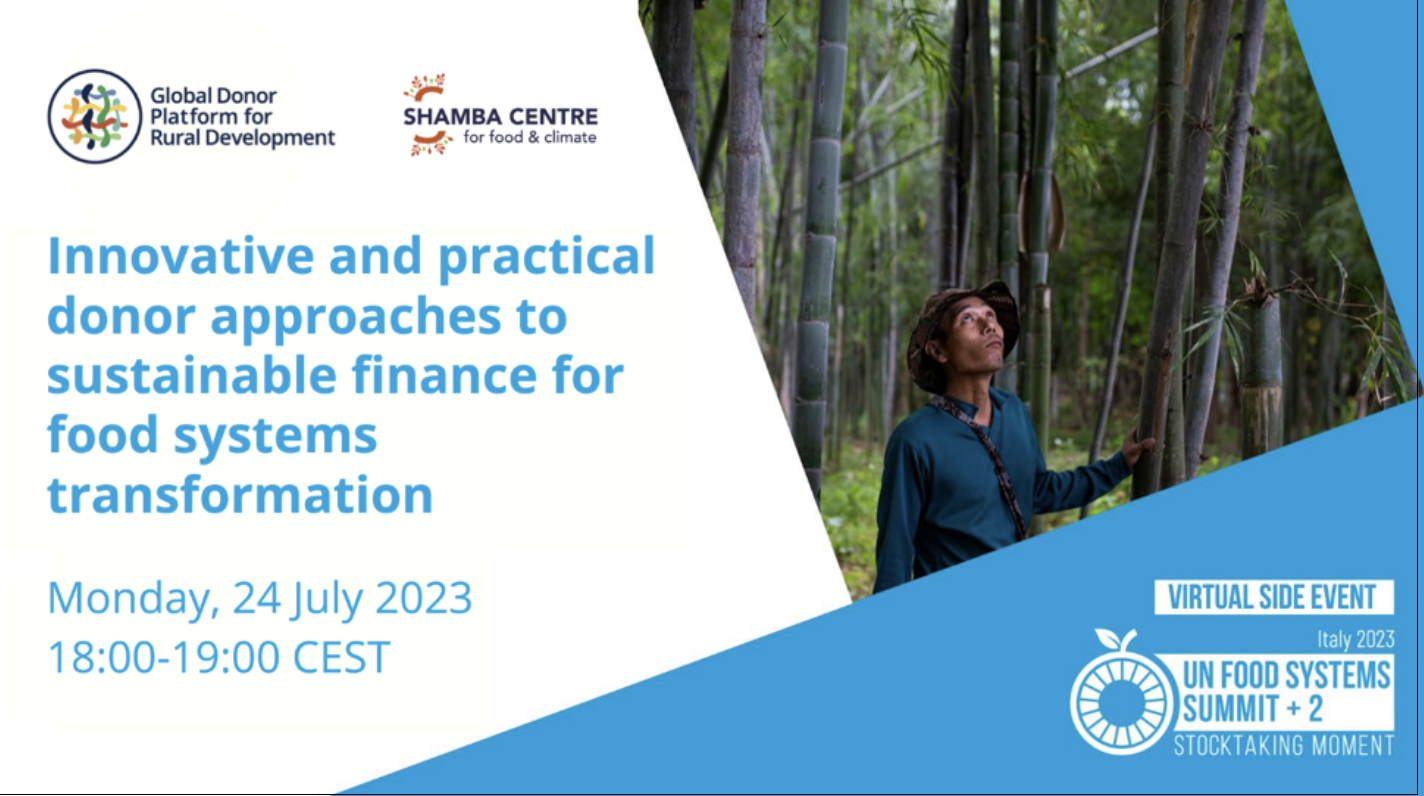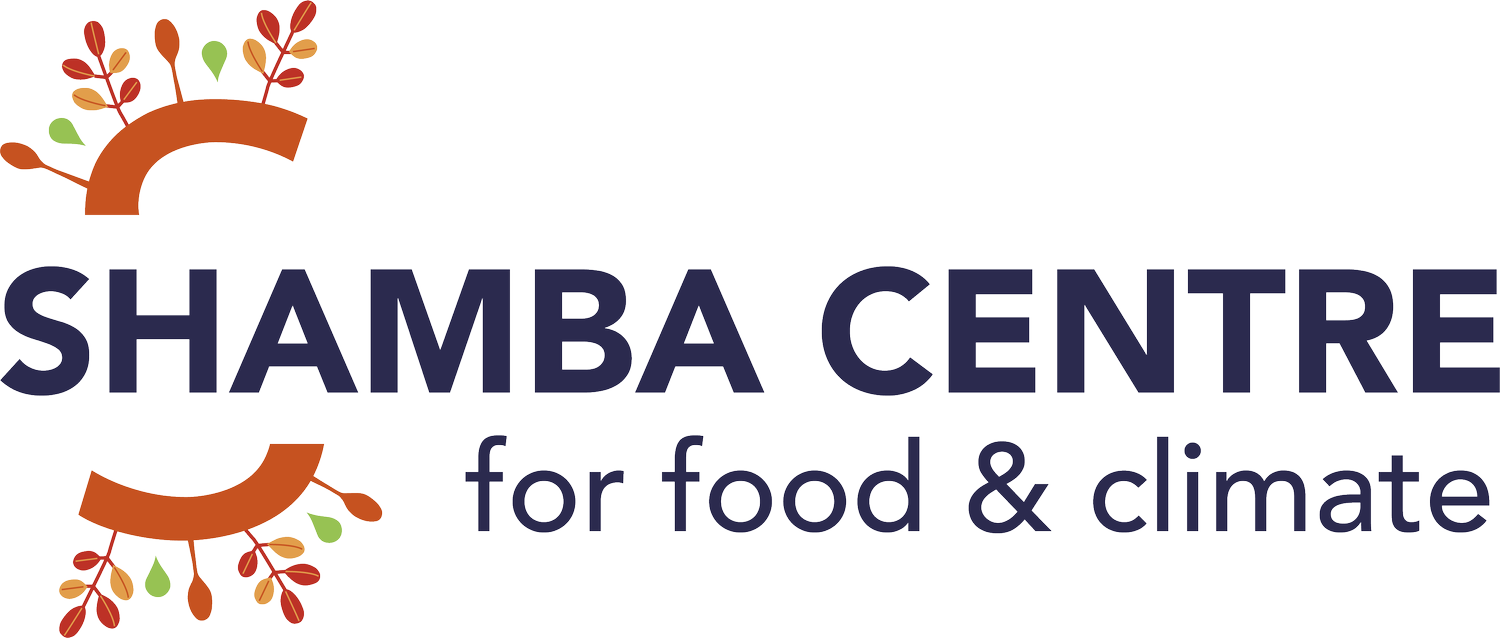
7 July 2023 [updated 30 November]
The Shamba Centre for Food & Climate, together with the Global Donor Platform for Rural Development (GDPRD), organized a webinar entitled Innovative donor approaches to sustainable finance for food system transformation, as part of the official side event programme for the UN Food Systems Summit +2 Stocktaking Moment (UNFSS+2).
This side-event provided insight from donors on how they are balancing competing demands and interests in a difficult geopolitical and economic environment. It explored their initial steps in innovative finance, including the topic of ‘pay for performance’ and blended finance, and examined the conditions needed to ensure the success of blended funds.
Speakers list
Speakers included:
Tuleen Alkhoffash, Senior Partnership Officer, International Fund for Agricultural Development (IFAD)
Tshewang Dorji, Climate Change Specialist, Global Environment Facility
Hans Hoogeveen, Independent Chairperson of the Council, FAO
Iris Krebber, Head of Food Security, Land and Agriculture & Special Advisor, Foreign, Commonwealth and Development Office (FCDO) in the United Kingdom
Christopher Wayne, Associate Director, Investing in Agriculture, Acumen Fund
This virtual side-event was moderated by Oshani Perera, Co-founder and Director of Programmes for the Shamba Centre for Food & Climate.
How can donors make their funding more catalytic?
Donors and public funds are working continuously to increase the impact of their investments with the aim to achieve the SDGs and transform our food systems. However, there remains an estimated US$330 billion funding gap needed to eradicate hunger by 2030 as detailed in the Ceres 2030 report. New sources of funding are necessary, and donors need to find new ways to make their funding more catalytic.
The side-event explored how official development assistance (ODA) for food systems can better link to and increase synergies with other sources of development finance? Given the stagnating pool of ODA to agriculture and food systems, many donors are interested in finding stronger linkages with other sources of development finance that are either newer (e.g., climate finance, biodiversity finance, gender finance) or growing (e.g., emergency assistance). Better understanding how to establish stronger linkages and synergies, while avoiding double counting, could provide more innovative solutions to better spend the total ODA amount globally.
To what extent should donors be looking to use their ODA grants and concessional loans to mobilize additional development finance from philanthropic and private finance providers? How important is public funding for de-risking? The World Bank and other multilateral development banks (MDBs) receive contributions from donor governments and issue bonds to raise funds from capital markets. Should donors' contributions to these agencies be considered catalytic?
These were some of the many topics that will be addressed during the side-event.
The side-event is part of a larger consultation currently underway by the Shamba Centre and the GDPRD exploring how donors, international public funds and philanthropic organisations can make their funding more impactful and serve as a catalyst for achieving SDG 2.
